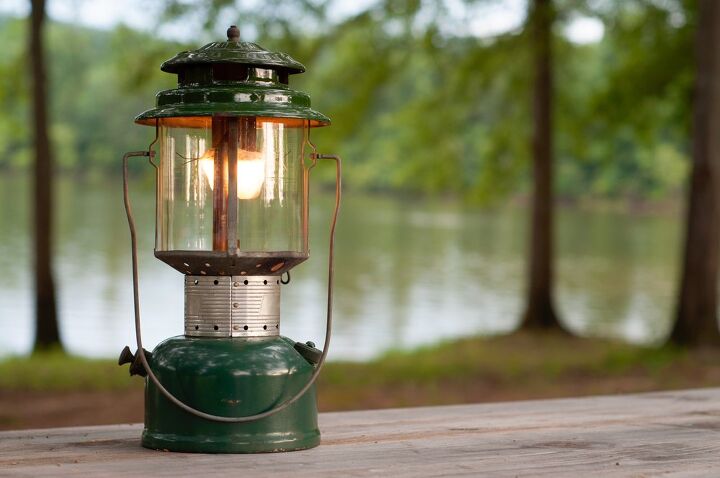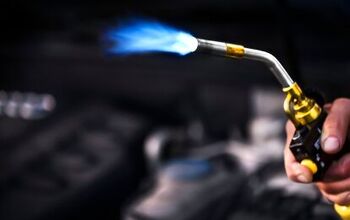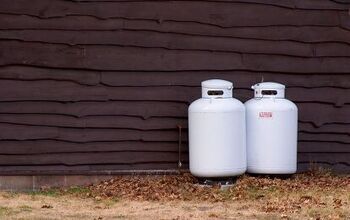Can You Use A Propane Lantern Indoors? (Find Out Now!)

When it comes to preparing for a major storm, one of the biggest issues you may have is keeping a reliable source of light. Batteries can fail and corrode. Propane can appear to be a good choice, especially for food prep outdoors. But when you get a propane lantern, is that really the best option for lighting inside your home?
You should never use a propane lantern indoors. Buring propane creates carbon monoxide, a deadly, unscented gas that can be trapped inside a home fairly easily. Always use your lanterns outside, in a very well-ventilated area.
Propane lanterns have their own unique role to play in disaster prep, camping, and other stuff. Let’s talk about why you shouldn’t use propane lanterns indoors.
Why Can’t You Use Propane Lanterns Indoors?
Propane, like many other fuels, creates carbon monoxide as a byproduct when it burns. Carbon monoxide is a poisonous, deadly gas that can cause headaches, confusion hallucination, and asphyxiation. In other words, it can kill you and in most cases, people won’t notice they’re in danger because it doesn’t have an odor or color.
Because propane created carbon monoxide when it burns, you need to burn propane in a very well-ventilated outdoor area. It’s the same reason why you can’t use a charcoal grill indoors. The gas inhalation could pose a very serious threat to your life. It’s just the same as leaving your car running in your garage.
What Lantern Alternatives Are Safe For Use?
So, obviously, propane lanterns are a clear no-go for indoor use. The gas alone is too much for people to safely bear. This means you will need to invest in a lantern alternative that is better for indoor use. We suggest the following:
- LED Lanterns. Battery-powered LED lanterns are safe by design, affordable, and easy to use. Depending on the battery life, you might be able to rely on a single lantern for the entirety of your next blackout. If you can, go for these.
- Shake Lights. Shake lights (and similar lanterns) are powered by kinetic energy that comes from shaking the unit or turning a crank. These do not require any kind of fuel whatsoever—just a little elbow grease! They are made to be super safe and also are ideal for concerns about long-term blackouts.
- Candles. They make 100-hour emergency candles for this reason, ya know! Personally, I always keep a handful of candles around the house because they smell nice when they burn. The safe light aspect of things is also a nice perk. While they may make your home dusty from soot, they still are reliable when other lights fail.
- Lamp Oil Lamps. These are usually found in antique stores, but there are a couple of companies that are trying to make them have a comeback. Go figure.
- Your Cellphone Flashlight. If you need a small light that works like a flashlight, just use your cellphone in a pinch.
- Battery-Operated Flashlights/Lanterns. Not all flashlights and lanterns are going to be powered with LED lights. Some of the older ones will have incandescent lightbulbs that are made to be rugged. If you have one of these, you can rest assured that you can use it.
Note: If you are using battery-powered items, always have a fresh store of batteries with you. If you notice leaking batteries or similar problems, throw away the batteries and check your light for corrosion.
Can You Burn Lamp Oil Indoors?
Though it may be related to kerosene, lamp oil has been purified to the point that it no longer will have as many pollutants. You can safely burn lamp oil indoors without concern for carbon monoxide or soot. If you have one on hand, this is a fairly reliable, long-lasting option.
Can You Use Kerosene Lanterns Indoors?
Kerosene is a chemical that is even more pollutant-rich than propane, which is why you generally don’t see kerosene grills in use. Considering that we’ve already established why you shouldn’t use propane, it’s safe to say that kerosene would be an even worse option.
Kerosene doesn’t just give out large quantities of carbon monoxide. There are other burn byproducts that make this one of the worst fuels to cook with or try to use indoors. Unless you want a truly foul smell in your home and want to ruin a carpet by spilling kerosene on it, you’ll pass on this fuel.
Related Questions
Can you use a propane heater indoors?
Propane heaters have the same problem as propane lanterns: they emit a large amount of carbon monoxide. However, most heaters are still designed for indoor use. If you want to use one indoors, you will need to make sure that the heater you pick is properly vented and that you use it in a well-vented space.Always follow the instructions that your heater comes with. If it tells you that it cannot be used indoors, do not attempt to use it indoors. If you do not have a vent for your heater, it may be best to avoid using it.
Can you cook with kerosene?
While there are a handful of kerosene grills, they are not popular and are still fairly rare. Most people agree that kerosene is a pretty terrible fuel for cooking. It is heavily polluted, which means you’ll inhale a lot of CO as well a wide range of other chemicals. This bodes bad for your health.Cooking with kerosene isn’t just a health hazard. The chemicals from kerosene leech into food. This causes foods cooked with kerosene to taste foul and acrid. It’s just a bad idea.
How long will a propane tank last on a heater?
Though there may be some extenuating circumstances (such as needing a very high heat), most propane tanks will last around 20 hours on a typical heater. If you need to have more time on your heater, you may want to look into natural gas. It’s cheaper than propane. You can hook it up to your home’s gas line in a pinch, too.

Ossiana Tepfenhart is an expert writer, focusing on interior design and general home tips. Writing is her life, and it's what she does best. Her interests include art and real estate investments.
More by Ossiana Tepfenhart



























